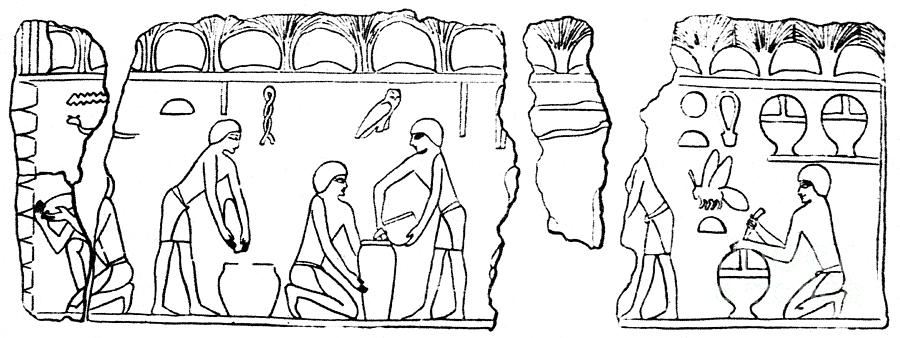I was recently talking to a friend of mine who commented on seeing me in a recent publication from our Grand Lodge. I jokingly told him I would sign his copy. He laughed but told me he already threw out his copy. I don’t know why, but this really made me stop and consider the current state of the craft.
Our lodge has embraced change very well, in addition to our snail-mailed printed lodge notice, social media, mass email marketing, digital lodge notices, and online event pages have found their way into our communications – our rightful place in remaining current with the times. Being Worshipful Master gives me unrestricted access to the all the metrics – and it’s rather disheartening. Our membership boasts numbers above 600, out of that 600 we have email accounts for around 400 members. Those 400 members get emailed 2-3 times a month with reminders of upcoming events and activities. Yet, we still get the same lackluster attendance at our stated meetings, rarely anyone on the sidelines for our extra meetings, and it’s the same handful of guys that show up to special events. We have a wonderful problem of conferring, on average, 4 degrees at every extra meeting.
I have the awesome pleasure to congratulate newly entered, passed, and raised masons – but I can’t help but feel like we’re missing something. We’re getting them in, but what are we doing to keep them?
Every month I stare at the metrics, 2 members unsubscribe from our emails about every other month, out of the 400+ emails sent, only about 30% bother to open and read the email, and about 12% actually click on links to sign up for activities. Again, the same handful of guys every time. I envision my friend throwing away his publication from the Grand Lodge, and wonder how many are following suit. It’s almost like our notices, emails, and event invites have become all too much and are dangerously walking on the edge of being classified junk mail.
When I took the East I had grand visions of promoting Masonic Education and drawing huge crowds to our Stated and Extra Meetings. I started this Book Club with high hopes of it just taking off, but soon realized I was really the only person hyped up on this becoming something big. My Stated Meetings are still just as boring as before, and our Extra Meetings (even though we are constantly raising masons on a monthly basis) are still rarely attended. Why? I spent my first months worrying about what would happen if I, GASP, did something different! Only to realize this was a foolish mistake, and time wasted.
My God when did my Stated Meetings become junk mail?
As a regular podcast listener, and fan, of the Masonic Roundtable, I was delighted when my Senior Deacon decided to propose something new and asked if he could form a “Lecture Series” – with speakers from the TMR. Jon and Jason came out for the day and gave awesome presentations (not to slight our other guest, Chris, who also gave a great talk about Joseph Fort Newton), but it was in Jon’s presentation that turned on the light in the back of my head. Without re-hashing the data:
Jon pointed out in his Masonic Survey that men [for the most part] not only come to lodge seeking fellowship and comradery, but more importantly they come to lodge seeking knowledge. And how is knowledge obtained? Through Masonic Education.
BAM! Not that there isn’t a place for presentations outside of Masonry, but when guys come to lodge, they are seeking light. AS the Grand Master put it, they are seeking to add value to their Masonic membership – and a way we can add value is through education. This would seem rather elementary, but for some reason, the thought just didn’t click for me until that moment.
Unfortunately, I made arrangements for the following months to be loaded with useful, but irrelevant presentations, and what momentum I had, I might have squashed. I am hopeful that I might be able to salvage just a sliver of that momentum, and it could just be enough to get us back on track. This month we are being visited by the District Deputy Grand Master and the Masters of the Lodges in my district. Our upcoming meeting will feature some of the old, and some of the mandatory pomp and circumstance – but we’re also going to have a presentation that hasn’t been done in our district yet. It’s that little unknown that excites me… and it’s also our Strawberry Social.
Lession Learned: Follow your gut, don’t be afriad of what others will think and do what interests you. Had I stuck to that philosphy from the beginning of the year, I wouldn’t be feeling like junk mail.
We are called off from labor over July and August, and when we come back in September I have bigger plans, we’re going to get weird. Stay tuned and find out.
The inspiration for this new vision for the rest of the year ahead:
“Originals: How Non-Conformists Move the World” by Adam Grant
“It’s Business Time: Adapting a Corporate Path for Freemasonry” by Robert H. Johnson and Jon T. Ruark
Contributing Author:
Brother L. K. Bray III is the current Worshipful Master for Lodge No. 43, F. & A.M. of Lancaster, PA. He is a 32° Scottish Rite Mason and a Member of the Pennsylvania Academy of Masonic Knowledge where he is a Level 2 Scholar.



